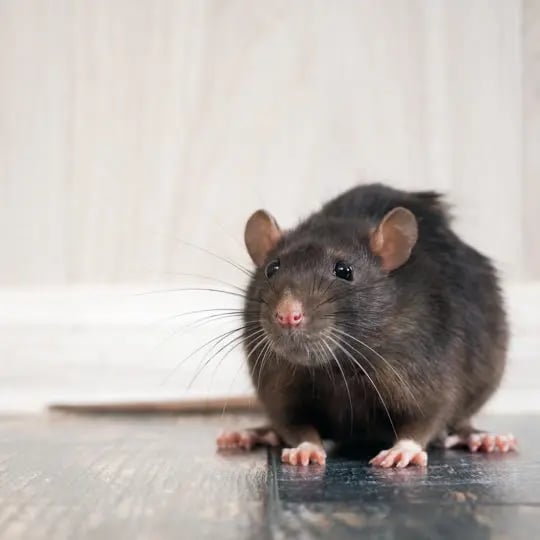
Scientific Name: Rattus rattus
Lifespan: 1 to 3 years.
Problem: Property damage
The roof rat – Rattus rattus – is a species of rat, originally from Asia, that traveled to Europe in the 1st century and proceeded to spread throughout the world via the ocean, earning them the alternate name “ship rats” (they are also known as “old English rats,” and as “black rats” due to their scraggly black fur). They are slightly smaller than their large cousin, the brown or house rat, but no less damaging to property.
The Roof Rat Life Cycle
- Babies – Roof rats are born in litters of 4-8 pups, which are small, pink, blind and confined to the nest. Unlike brown rats, roof rats create their nests in high places like attics. A female roof rat lays 3-4 litters per year.
- Juveniles – After four weeks, roof rat pups have been weaned and will travel around without their mother, but within the environment where they were born. Young roof rats are smaller and darker, but tend to become browner with age.
- Mature Animals – The adult roof rat is about 15-25 cm long, not including the tail. Its coloring ranges between black and grey-brown, and it has a distinctively long tail (longer than its body) that helps it to balance itself.
Roof Rat Habitats and Habits
Roof rats live in warmer areas, and will move if threatened by an invasion of the larger brown or “Norway” rats. They are good climbers and are happy to live in high places such as palm trees, roofs and attics.
Roof rats are better at teamwork than many other rodents, and will nest, forage for and store food in groups. They are omnivorous and will eat most anything, though, like squirrels, they have a preference for nuts and fruits. They require more water in their diet than most other rats.
How to Recognize and Get Rid of a Roof Rat Infestation
The following signs will help you to recognize a roof rat infestation when you see one:
- Blunt-ended pellets 6-12 mm in length
- Grease marks on walls
- Uneven holes in walls about 5 cm in diameter
- Unpleasant musky odor
- Scratching and chewing sounds from overhead
Once you have identified roof rats as the pest in question, you can get rid of them by covering holes in your walls either with caulk or with metal mesh, which is harder for rats to chew through, and by making sure their access to food and especially to water is limited. A convenient water supply is a big draw for roof rats, so be sure to cover pets’ water dishes at night when rats are most active.
Need Help with Roof Rats - Green Pest Solutions?
Call today at and let's talk about how we can help you with Roof Rats - Green Pest Solutions and other Pest Library.